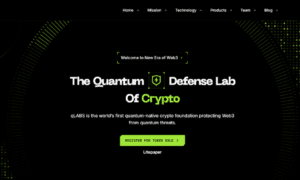Burnout isn’t a bug in the system—it’s a feature of how most systems in tech are currently designed.
And yet, many tech leaders still treat burnout like a performance issue, a time management flaw, or an individual weakness. They throw productivity hacks at it. Offer mindfulness apps as a perk. Encourage people to take time off, but quietly reward the ones who power through. When that doesn’t work, they look for new talent to replace the ones who “couldn’t keep up.”
What gets missed in all this is the truth: burnout is not a personal failure, it’s a cultural signal. And too often, leadership misunderstands what it’s actually trying to say.
Burnout is caused by sustained emotional dissonance. When people consistently give more than they feel is acknowledged, when their work lacks meaning or clarity, or when their personal values start to diverge from what the company rewards.
In the tech industry, this is compounded by the pace and pressure. Ship faster. Scale smarter. Move like a startup, even when you’re not. What gets glorified is stamina, not sustainability. And what gets lost is the human experience of the people doing the building.
Burnout isn’t solved by optimizing calendars or adding another tool to the stack. Instead, good leaders solve this by being willing to rethink what they’re asking of their teams and themselves.
Many tech founders and executives rose through the ranks because of their capacity to grind. To push through. To outwork, out-hustle, out-produce. That same drive often becomes their blind spot.
They assume everyone else can operate like they did. Or worse, that they should. But not everyone is built to sprint through 12-hour days fueled by adrenaline and problem-solving. Even those who are can’t do it forever. What once worked in the early stages becomes toxic when scaled.
The irony? Leaders often don’t recognize their own burnout. They’re so used to running hot that exhaustion feels normal. The signals of irritability, detachment, and lack of creativity get rationalized as “just being in a busy season.” But when leadership is disconnected from its own limits, it loses the ability to recognize and respond to burnout in others.
Many organizations offer wellness benefits, including mental health stipends, yoga classes, meditation apps, and flexible work arrangements, such as summer Fridays. But if the culture still rewards speed over clarity, perfection over progress, or availability over boundaries, those perks are just window dressing.
Burnout thrives in environments where people:
- Don’t feel safe saying no
- Lack of clear priorities
- Are expected to be “always on”
- They are praised for sacrificing themselves for the mission
Burnout is also contagious. If one team member is quietly collapsing under pressure, it affects communication, collaboration, and morale. If a manager is emotionally checked out, their team will start to mirror that.
The fix isn’t another HR initiative. It’s a leadership reckoning.
This is where self-aware leadership becomes the inflection point. Leaders who are attuned to their own mental and emotional state are better at recognizing stress signals in others. They can respond, not react. They can model boundaries, not just talk about them. They create the conditions for sustainable performance, not just short bursts of output.
That’s why many executives turn to CEO coaching services. Not because they’re broken, but because they’re ready to stop equating overextension with excellence. Executive coaching creates space to zoom out. To question the assumptions that built the current operating mode. To redefine success in ways that actually include the human beings doing the work.
A coach might ask:
- What would it mean to lead without martyrdom?
- How do you respond when someone on your team says they’re overwhelmed?
- Are you holding space for creative thinking, or only constant output?
These are strategic questions. Because burned-out teams don’t innovate. They retreat. And burned-out leaders don’t inspire trust. They transmit urgency, not clarity.
The Reframe: Burnout as Feedback
What if we treated burnout not as a failure, but as a valuable source of feedback?
As a signal that something in the system—be it expectations, pace, communication, or priorities—is misaligned. As a prompt to revisit how success is defined, and what it actually costs.
The best tech leaders aren’t the ones who can outwork everyone else. They’re the ones who create environments where others don’t have to. They prioritize clarity over chaos, presence over panic, and sustainability over short-term wins.
Because the real edge in tech isn’t speed. It’s the ability to stay in the game long enough to build something that lasts.



































